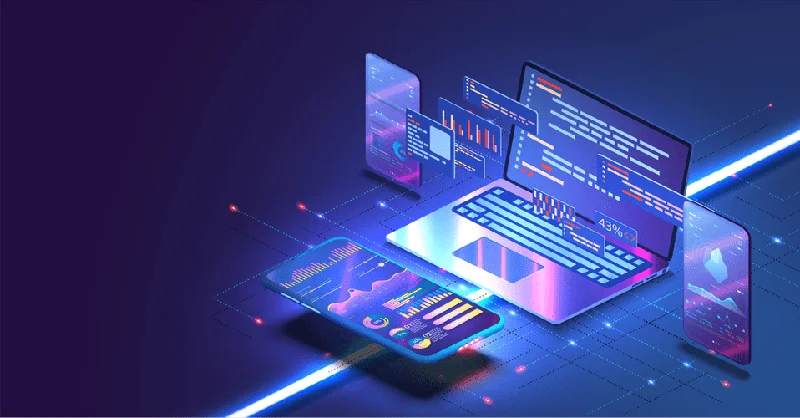What Is Containerization? Software Program Defined
Some examples are solar-powered containers, LNG-fueled ships, and biodegradable packaging supplies. Freight services play an instrumental function within the global provide chain, making certain that products move seamlessly from producers to consumers across huge distances. These services embody numerous modes of transportation, including sea, air, rail, and highway. Correct labeling is crucial in making certain smooth dealing with all through the supply chain process. Each container should have clear labels displaying info corresponding to contents description, vacation spot port code, and consignee particulars.
“One thing that was lost in creating all of that stability was the power to scale rapidly and to alter elements of the application, to pivot what the company does and tackle market developments,” Hynes stated. First appearing as “cgroups” throughout the Linux Kernel in 2008, containers exploded in recognition with the introduction of Docker Engine in 2013. Because of that, “containerizing” and “Dockerizing” are often used interchangeably. Containerization isn’t static; it’s rapidly evolving and increasingly intersecting with numerous emerging applied sciences. This section explores how containerization is integrating with and revolutionizing cutting-edge fields, from AI to IoT.

Our Cloud Computing Programs Length And Fees

This consistency eliminates the “works on my machine” downside and ensures that purposes behave uniformly regardless of the place they’re deployed. This method is a stepping stone in the direction of modernizing and finally refactoring older applications into more cloud-friendly architectures. Containerization has rapidly transformed right into a key driver of efficiency and scalability within the tech sector.
- To containerize an application, a software program bundle generally identified as a picture is created, which incorporates the appliance’s code, libraries, configurations, and dependencies.
- If you are trying to modernize a legacy application, containerization can help by encapsulating the old software and its setting, making it more transportable and simpler to deploy on modern infrastructure.
- Containerized cargo has revolutionized the transport industry, making transporting items worldwide more manageable and environment friendly.
- The shift allowed developers to ship companies with none site reliability engineering involvement and lowered deployment instances as a lot as 85 %, Lynch mentioned.
- Container orchestrators enable builders to scale cloud applications precisely and keep away from human errors.
Significance Of Monitoring In Containerized Environments
The solely method to use Kubernetes, which handles the orchestration of containers on servers, is by putting code into a container. Microservices and containers work well collectively, as a microservice within a container has all of the portability, compatibility, and scalability of a container. Where VMs work properly with conventional, monolithic IT architecture, containers had been made to be appropriate with newer and rising expertise like clouds, CI/CD, and DevOps. Unlock new capabilities and drive business agility with IBM’s cloud consulting companies. Discover tips on how to co-create solutions, accelerate digital transformation, and optimize performance through hybrid cloud methods and skilled partnerships.
Containers want to speak with each other and the surface world, which requires a strong networking setup. Using Docker and Kubernetes parallelly can broaden the containerization capabilities and amplify the results. Simply put, Kubernetes forms a symbiotic relationship with Docker to make the container infrastructure robust and scalable with out compromising availability. At the same time, they complement each other properly and may form a strong combination. The Dockerfile is a set of instructions to inform the container what to do when it gets constructed, which occurs right before it’s deployed. (☹) On the back of the field, there would usually be specs to the software program that said this software will solely run on machines that run Mac or Windows.
As containerization continues to evolve, it is shaping up to integrate extra deeply with rising applied sciences and adapt to new standards and laws. The future developments in containerization are anticipated to drive significant modifications in how functions are developed, deployed, and managed. Also, utilizing containerization explained orchestration tools like Kubernetes, containers could be dynamically managed to ensure optimal resource utilization, automated healing, and streamlined scaling in response to demand. While instruments like Kubernetes provide powerful orchestration capabilities, they arrive with a learning curve and management complexity. Setting up, maintaining, and scaling a big containerized surroundings requires significant experience. Containers offer a constant environment from improvement through to production, which streamlines software growth, testing, and deployment.
Bmc Helix Supports Innovation With Devops Analysis And Assessment Metrics
This transience makes monitoring and logging a challenge, as traditional tools is probably not fast sufficient to seize related information from containers earlier than they stop to exist. Containers are ephemeral and stateless by design, which implies they don’t maintain a persistent state. Integrating containers with persistent storage options can be advanced but is important for purposes that require information persistence. If a container is compromised, the breach is confined to that container, reducing the danger to the whole system. They additionally allow for the creation of isolated testing environments that mimic manufacturing environments intently, resulting in more correct testing and fewer surprises when deploying to production. Containers make higher use of cloud resources in comparability with conventional VMs, as they require fewer assets to run and may be packed extra densely on the underlying hardware.
Another cause corporations keep away from containerization is that containerizing legacy software is not as easy as flipping a swap. That unparalleled portability has made containers the secret weapon of cloud-native tech corporations and, more and more, their larger legacy counterparts. As containerization expertise matures and becomes more integral to enterprise and IT infrastructure, the evolution of container standards and regulations is becoming more and more necessary.
Tools like Docker are used for containerization, offering capabilities for packaging, deploying, and managing purposes. These platforms ensure useful resource and configuration isolation between containers. Containerization additionally makes deploying and scaling applications easy, as all of the dependencies are packaged collectively. Containerization is changing into more and more well-liked as a method to package deal and deploy applications. Many firms are using containers to ship their purposes https://www.globalcloudteam.com/ to clients. For organizations weighing the advantages of containerization, the counsel of seasoned professionals is a game-changer.
Docker, or Docker Engine, is a well-liked open-source container runtime that allows software builders to build ai networking, deploy, and take a look at containerized functions on varied platforms. Docker containers are self-contained packages of functions and associated files which would possibly be created with the Docker framework. The container engine, or container runtime, is a software program program that creates containers based on the container pictures.
A VM creates a hypervisor layer between operation system, applications and services and memory, storage, and the like. This structured strategy to containerization systematically isolates and manages purposes, making certain consistency, portability, and effectivity across diverse computing methods. Run, scale and handle containerized workloads across environments with flexibility, security and effectivity through the use of IBM’s complete container platform. Serverless computing (serverless) is an utility development and execution model that enables developers to construct and run software code without provisioning or managing servers or backend infrastructure. This process refers to transforming monolithic (legacy) applications into cloud-native functions built on microservices architecture designed to combine into any cloud surroundings. Developing and deploying containers will increase agility and allows applications to work in cloud environments that greatest meet business wants.
Namespaces can limit access to any of those resources via processes within each container. Typically, subsystems that do not have Namespace help aren’t accessible from inside a container. Administrators can easily create and handle these “isolation constraints” on each containerized software through a easy person interface. These practices should address the entire stack layers, together with the containerization platform, container images, orchestration platform and individual containers and functions. It also works with any container system that conforms to the Open Container Initiative (OCI) requirements for container image codecs and runtimes.